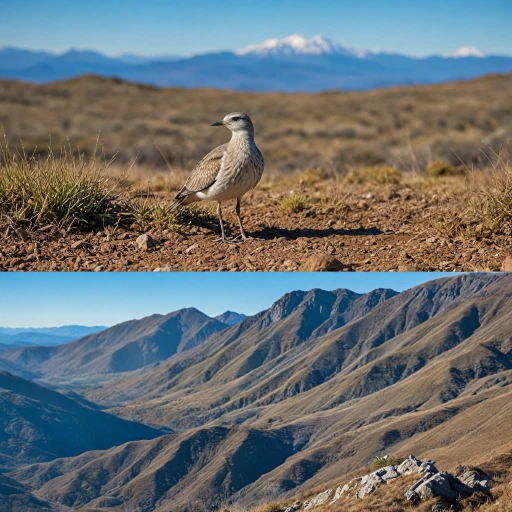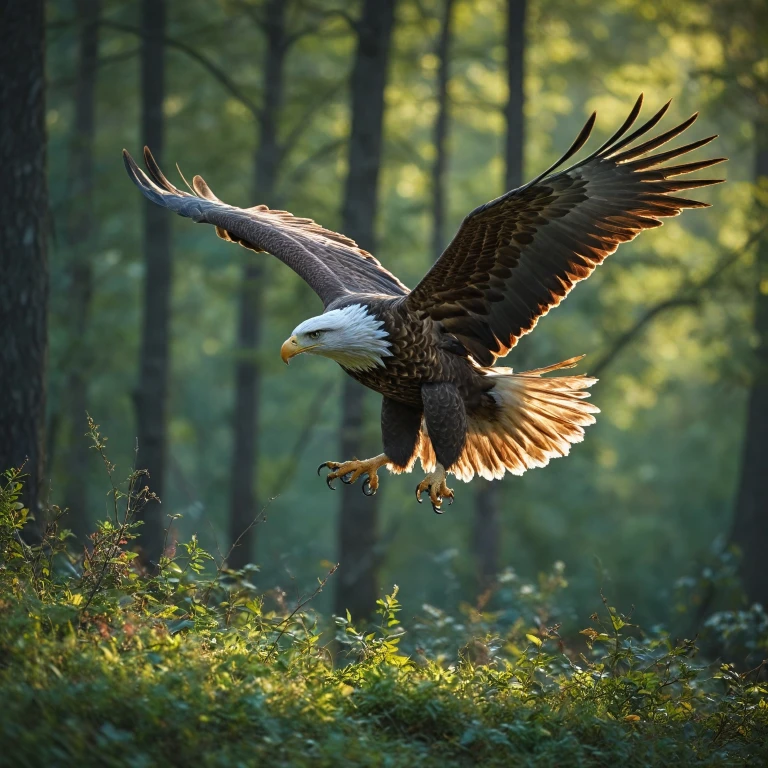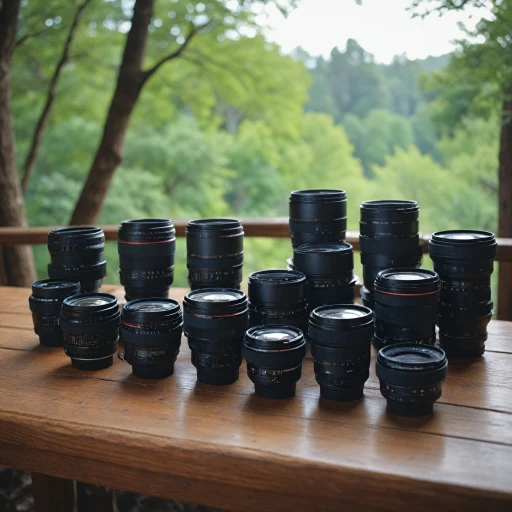
Understanding the rf100-400mm f5.6-8 IS USM Lens
Delving into the Specifications
When it comes to wildlife photography, choosing the right equipment is crucial for capturing those once-in-a-lifetime shots. Among the multitude of lenses, the RF100-400mm F5.6-8 IS USM lens from Canon stands out, offering a blend of versatility and performance. Designed specifically for Canon's line of EOS series cameras, this lens promises an impressive telephoto zoom capability tailored to meet the dynamic demands of wildlife photography. At the core of this lens is its focal length, ranging from 100mm to 400mm. This zoom range allows photographers to get up close and personal with distant subjects while maintaining image quality. The maximum aperture of F5.6-8 is suitable for various lighting conditions, ensuring that the photographer can adapt to the natural light without missing a critical shot. For those concerned about image quality, this lens incorporates image stabilization technology to minimize blurriness, a key feature when shooting at longer focal lengths where camera shake is more pronounced. Furthermore, its USM (Ultrasonic Motor) technology ensures fast and silent focusing, an essential feature for capturing wildlife without disturbing the subject. The nano USM technology integrated within the lens delivers superior focusing speed and accuracy, while its light weight nature means less strain when holding the camera for extended periods. This combination makes it an appealing choice for photographers who spend significant time in the field. For more in-depth technical details about telephoto lenses, refer to this comprehensive guide. Whether you're a seasoned pro or a budding enthusiast, understanding these specifications can significantly impact your photography journey.Key Features of the rf100-400mm Lens
Exploring the Core Specifications
The Canon RF100-400mm F5.6-8 IS USM lens is designed with wildlife photography in mind, offering a versatile zoom range that allows photographers to capture subjects at varying distances. This telephoto zoom lens features a focal length that stretches from 100mm to 400mm, making it ideal for capturing distant wildlife without disturbing their natural habitat.
Advanced Autofocus and Image Stabilization
Equipped with Canon's Nano USM technology, the lens ensures fast and silent autofocus, a crucial feature when photographing skittish wildlife. The image stabilization system provides up to 5.5 stops of shake correction, enhancing image quality by reducing blurriness in low-light conditions or when shooting handheld. This makes it a good choice for both amateur and professional photographers who need reliable performance in challenging environments.
Lightweight Design for Portability
One of the standout features of the RF100-400mm is its lightweight construction. Weighing approximately 635 grams, this lens is easier to carry during long photography sessions, allowing photographers to focus on capturing the perfect shot without being bogged down by heavy equipment. Its compact design also makes it a suitable companion for Canon EOS series cameras, enhancing overall portability.
Considerations for Maximum Aperture
While the lens offers a broad zoom range, its maximum aperture of F5.6-8 may present challenges in low-light situations. Photographers need to be mindful of lighting conditions and may need to adjust their camera settings accordingly to maintain image quality. For those interested in exploring other lens options, choosing the perfect lens for your Leica M5 might provide additional insights into selecting the right equipment for various photography needs.
Advantages of Using the rf100-400mm for Wildlife Photography
Benefits of Enhancing Your Wildlife Photography Experience
The Canon rf100-400mm f5.6-8 IS USM lens stands out as a robust tool for wildlife photography, offering several benefits that make it a worthy addition to a photographer's arsenal. Its design is tailored for capturing the unpredictable and dynamic nature of wildlife. Here’s why it works well for this field.- Exceptional Zoom Range and Versatility: The zoo range of 100-400mm allows photographers to capture subjects at varying distances. This telephoto zoom lens offers flexibility without compromising on image quality, making it ideal when observing animals from a distance without disturbing them.
- Lightweight Design: Weighing less than many of its counterparts, this Canon lens is convenient for photographers who need to maneuver quickly and carry their gear into challenging terrains. The light weight contributes significantly to reducing fatigue during prolonged shooting.
- Advanced Image Stabilization: The lens features Canon's renowned image stabilization technology, reducing blurriness caused by camera shake. This feature is crucial when shooting handheld or in low light conditions common in wildlife photography.
- Focus Precision with Nano USM: The STM motor in this Canon USM lens ensures swift and silent focusing. This silent operation prevents scaring off wildlife, while the focus is precise enough to ensure that the subject is sharp and well-defined in the frame.
Challenges and Considerations
Considerations and Obstacles with the RF100-400mm Lens
When diving into the world of wildlife photography, understanding the unique challenges and considerations associated with the RF100-400mm F5.6-8 IS USM lens is crucial for capturing the most stunning images. One of the key aspects to ponder is the maximum aperture range of F5.6-8. While this aperture range provides flexibility, it may limit performance in low-light conditions. The lens is equipped with robust image stabilization letting photographers achieve sharp images even in lower lighting, but remember to weigh this against the lower maximum aperture when planning your shoots. The focal length of 100-400mm offers impressive zoom capabilities, suited for capturing subjects at greater distances without disturbing them. However, it's important to be aware that at the upper end of the telephoto zoom range, you might encounter challenges with focus accuracy. The Nano USM technology integrated within the lens ensures a good focus speed and silent operation, but it might require practice to master the fine-tuning necessary for fast-moving wildlife subjects. Weight and portability are another consideration. Although the lens is relatively light compared to other telephoto zoom lenses, carrying it for extended periods can still be demanding. It's advisable to balance your equipment load, maybe through accessories like a 130 backpack for improved comfort during photography sessions. Compared to other lenses in the Canon EOS series, especially those offering larger maximum apertures, the Canon USM lens stands out for its affordability and versatility but might not offer the same level of image quality and light-gathering prowess when compared with higher-end lenses. Carefully reviewing lens options on e-commerce platforms such as Amazon can provide insights from other photographers on how this lens performs in varied wildlife settings. In conclusion, understanding these challenges and considerations will prepare you better, allowing you to leverage the strengths of the RF100-400mm lens while mitigating potential obstacles in your wildlife photography endeavors.Comparing the rf100-400mm with Other Lenses
Weighing Up Alternatives in the Telephoto Lens Arena
Choosing the right telephoto lens for your wildlife photography involves comparing different options to make an informed decision. The Canon RF100-400mm f5.6-8 IS USM lens stands as a reliable choice, but how does it measure up against other offerings?- Focal Length and Zoom Range: The RF100-400mm lens offers a focal length that provides considerable zoom range, making it a good option for capturing distant subjects, especially in vast wildlife environments. Compared to prime lenses in the same category, its zoom provides greater flexibility and the ability to adjust framing on the fly.
- Image Quality: Canon's lens emphasizes clarity with its advanced optics. While some lenses might offer wider maximum apertures, the combination of lens construction and image stabilization delivers consistently sharp images in dynamic light conditions.
- Lightweight Option: In terms of weight, the RF100-400mm is relatively lightweight, balancing well on Canon EOS bodies. This makes it a preferable choice for photographers who prioritize mobility and long sessions without fatigue.
- Focus Speed and Accuracy: Equipped with Canon's Nano USM technology, the focusing system ensures swift and accurate AF performance. When pitted against lenses with standard USM motors, it offers faster and more silent operation, beneficial for capturing skittish wildlife without disturbances.
Tips for Maximizing the rf100-400mm Lens in the Field
Elevating Your Wildlife Shots
To truly make the most of the rf100-400mm f5.6-8 IS USM lens in wildlife photography, there are several tips worth considering, aiming to maximize your effectiveness in the field. Understanding how to adjust the individual elements of this lens will not only improve your experience but also enhance the quality of your photos.
Adjusting to the Lighting Environment
The rf100-400mm lens is renowned for its image quality, especially in varied light conditions. The maximum aperture range from f5.6 to f8 offers a flexible approach to working with different lighting environments. Using the lens's image stabilization feature, you can manage low-light scenarios, ensuring crisp and sharp images. It’s essential to adjust the exposure settings on your camera accordingly, especially to maintain high image quality when the natural light diminishes.
Strategic Use of the Zoom Range
Wildlife photography often demands a lens with a long zoom range, and this Canon telephoto zoom does not disappoint. To fully utilize this lens, practice zooming gradually to maintain focus on moving subjects. Pairing it with a Canon EOS camera enhances this capability, leveraging the built-in Canon USM for fast and quiet focusing. Observing animal behavior and anticipating movements can aid in achieving the perfect shot without missing critical moments.
Leveraging Telephoto Capabilities
The lightweight aspect of the rf100-400mm telephoto lens makes it a practical choice for on-the-go photography. Its light weight allows you to carry it comfortably during extended wildlife trips. The focal length range is particularly advantageous for capturing distant subjects, giving you flexibility without comprising image stability and sharpness.
Mastering the Camera Settings
Utilize the lens's nano USM technology to achieve smooth focus transitions and reduce the inconvenience of jarring focus adjustments while shooting. This can significantly enhance the consistency of your photographs, making the Canon lens a valuable asset for wildlife enthusiasts. Fine-tuning camera settings, such as ISO and shutter speed, in tandem with the lens’s features, further augments the quality of your shots.
Regularly Reviewing Equipment
Frequent reviews of your equipment can significantly impact the longevity and performance of your gear. Regular maintenance ensures that your lens stays in good working order, preserving the lens's capabilities for producing high-quality wildlife images, as often noted in lenses reviews on platforms like Amazon. Consider your lens’s settings, clean the surfaces, and check for any signs of wear and tear to maintain the equipment’s overall condition.












